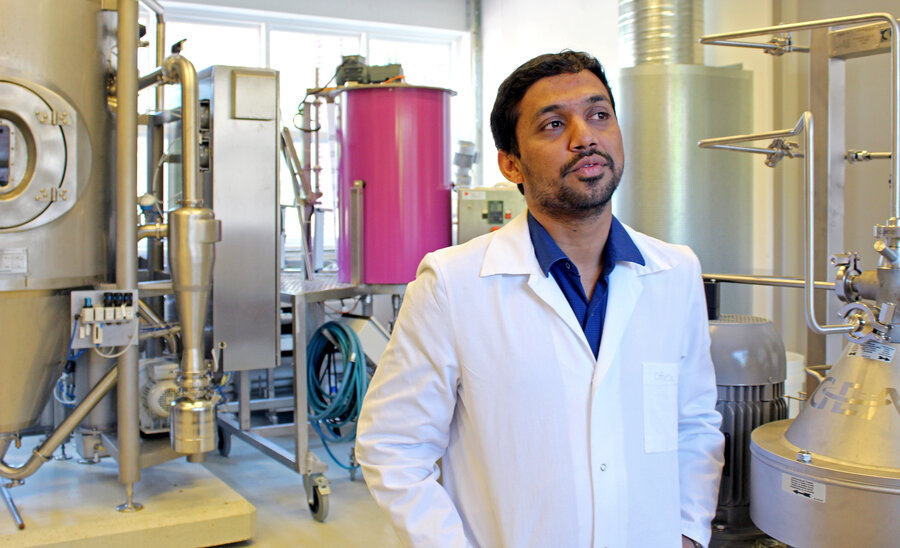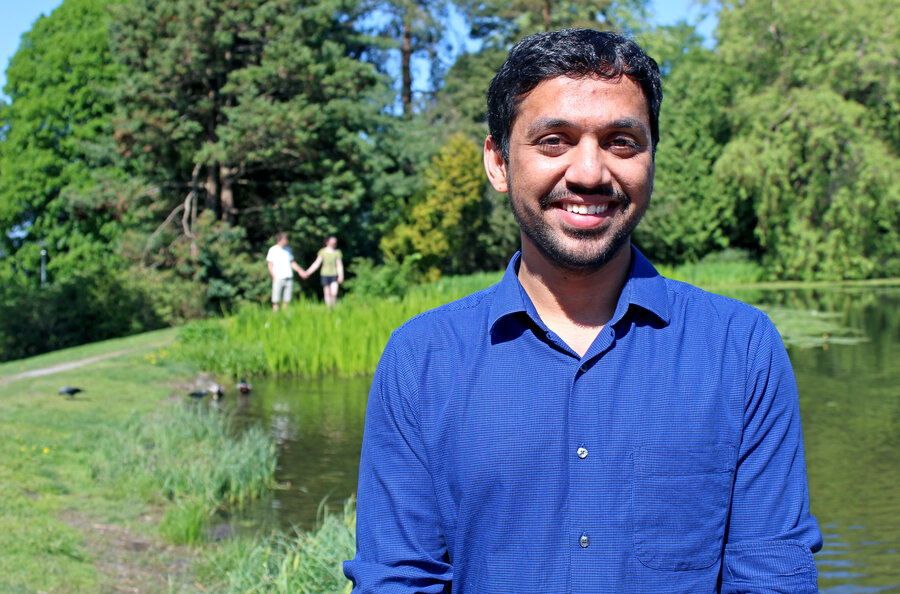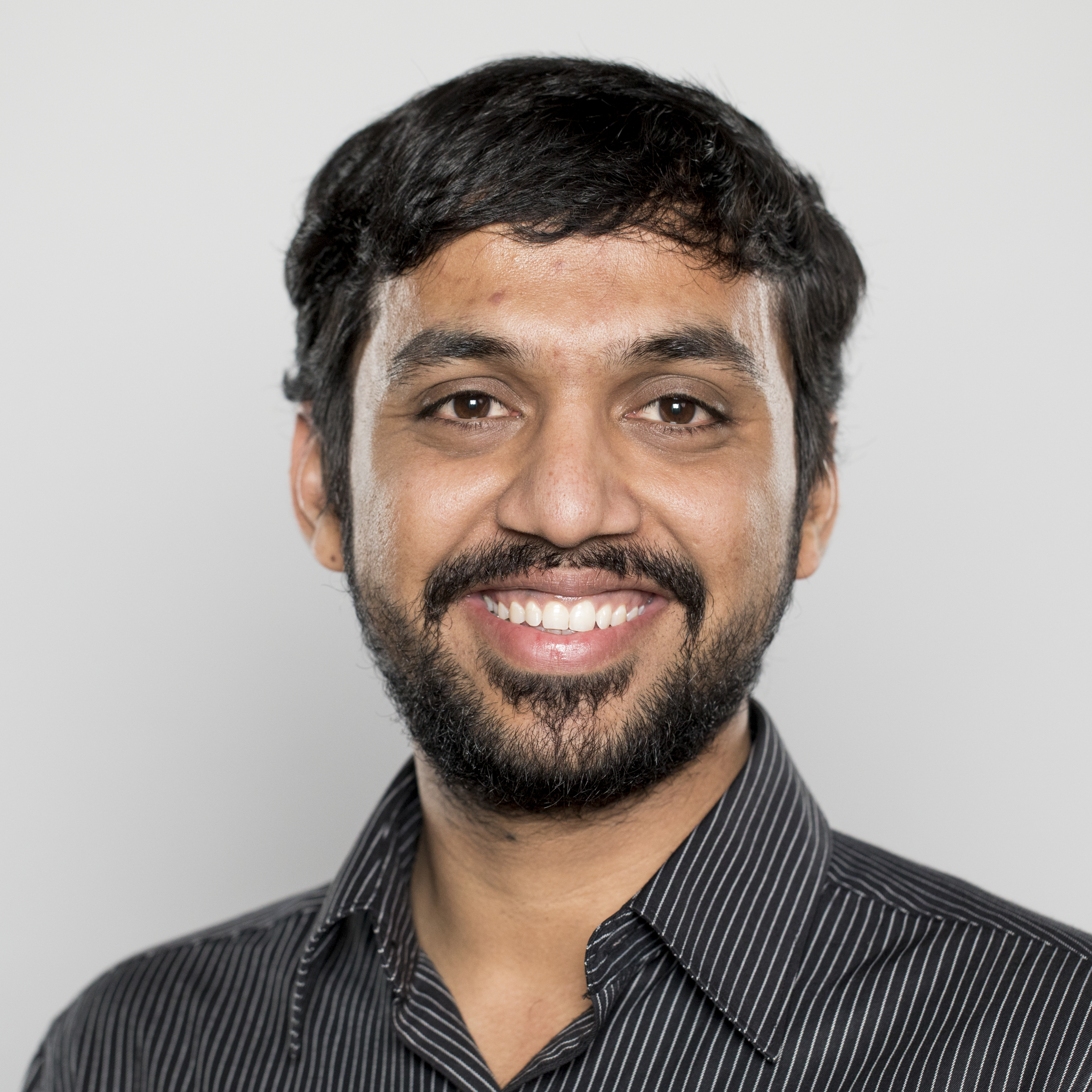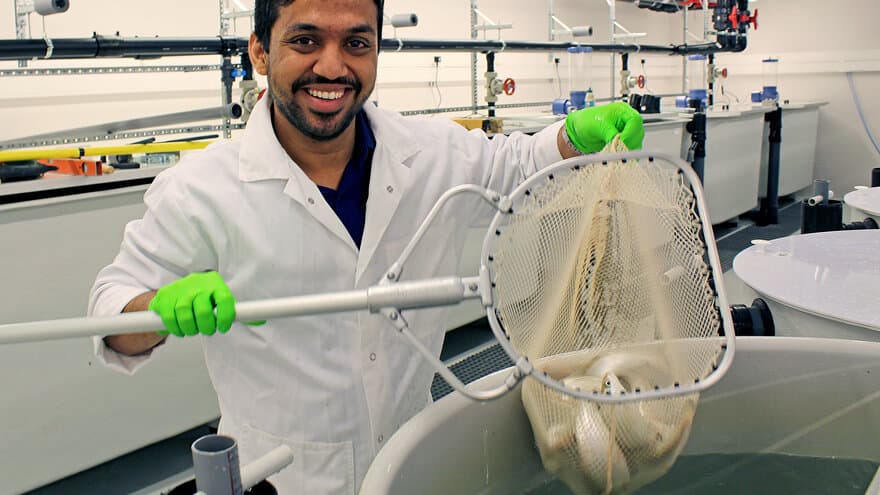Working for a big oil company in India, engineer Sandeep Sharma longed for a more sustainable career-path. Three years later he is defending his PhD-thesis at NMBU with ground-breaking results on novel fish feed derived from seaweed and spruce trees.
Sharma was working as a research associate in an oil company in the north of India when in late 2014 he decided to apply for a PhD-fellowship in Norway, linked to the BIOFEED project at NMBU.
- I realized that sustainability is the future. I wanted to contribute to that future by developing new products out of biomass, the 31 year old explains.
And so he has.
The main purpose of Sharma`s thesis was to investigate new ways to produce microbial protein for a novel fish feed based on seaweed and spruce.
In short, Sharma`s PhD thesis demonstrates that brown seaweed and spruce wood can indeed be used to produce protein-rich yeast for Atlantic salmon diets.

Never done before
- Sharma`s research proves that Norwegian bio-resources can reduce our dependency on imported soybeans and fishmeal, says his main supervisor, professor Svein Jarle Horn.
The important results in Sharma`s PhD have not been easy to achieve. His thesis was a Proof of Concept (PoC), meaning it had never been done before. Hence, he started with a nearly blank page.
- My main challenge was the lack of knowledge on seaweed in the field of bioprocessing. Before figuring out how to extract components of the seaweed and how to use them in the production of microbial protein, I had to determine their chemical composition.

"Local" feed
Sharma`s thesis is a part of the BIOFEED project, which uses advanced biorefinery technology to develop novel feed resources for Atlantic salmon from non-food biomass.
BIOFEED is highly relevant to Foods of Norway. The two projects share common ground, although Foods of Norway has a much broader scope, working with a range of different feeds for fish, poultry, pigs and ruminants.
Professor Horn describes Sharma as a «hardworking and dedicated researcher».
For Sharma, the time and effort invested in his PhD has felt rewarding.
- Both the vision and the application are so clear. Through my work, I could see how the fish were reacting to this new and sustainable feed. I can also see how this can provide the aquaculture, forestry and feed industries with new ways to reduce our dependency on imported feed ingredients from countries like Brazil, Peru and China.
Defence on Friday
His desire for sustainability that brought Sharma to Norway and NMBU in the first place, has only grown stronger during the course of his PhD.
He has already received and accepted a job offer from BioMar in Trondheim, a company involved in the development of a sustainable global aquaculture. As a research scientist there, he will be working with fish and shrimp nutrition and helping to develop aquatic feed products and feed concepts.
Before leaving NMBU, Sharma will publicly defend his thesis on Friday June 29th at 12.15 pm.

Fakta

Main findings in Sandeep Sharma`s PhD - «Production of microbial protein from brown seaweed and spruce wood and its use as a novel feed ingredient in aquaculture»:
- The seaweed composition varies with seasons and dependson the ocean depth. Seaweed cultivated at three meters depth had a higher sugar content compared to the same seaweed-species grown on eight meter depth.
- Extracting the sugar from the seaweed requires two enzymes: cellulose and alignate lyase. In-house enzymes are required in the commercialisation of fish-feed derived from brown seaweed, as alignate lyase is very expensive (100 mg cost approx. 1500 NOK).
- While brown seaweed from Norway does not require pre-treatment to extract sugar, Chilean brown seaweed requires acid pre-treatment.
- Glucose from brown seaweed and spruce wood can be used to produce protein rich yeast for fish feed.
- Growth performance and digestibility in salmon remains unchanged when replacing ordinary fish meal feed with 30 percent yeast.
- Seaweed contains high amounts of potentially harmful elements like iodine and cadmium. In trials, the salmon absorbed the Iodine from the novel feed. To avoid adverse health effects when used as food for humans, a pre-process is needed to extract the iodine from the seaweed before using it for animal feed.
